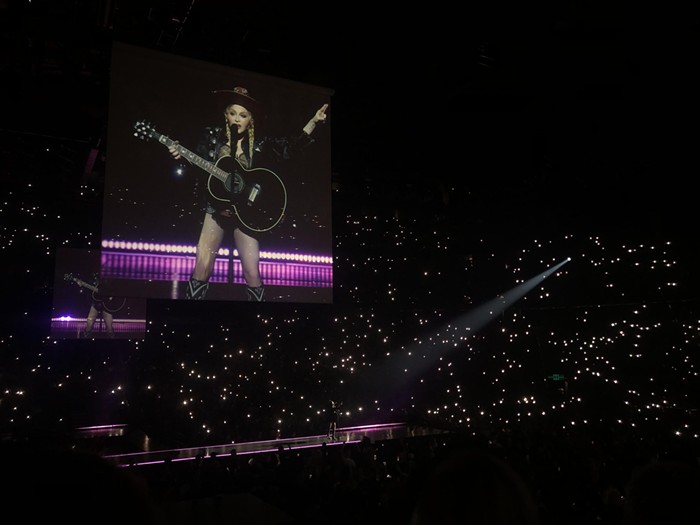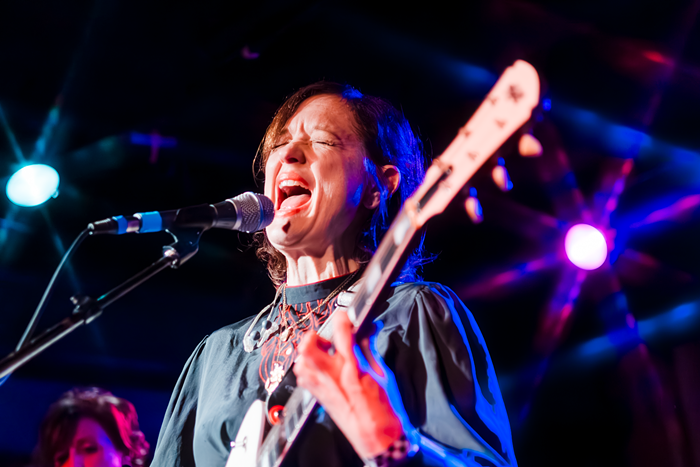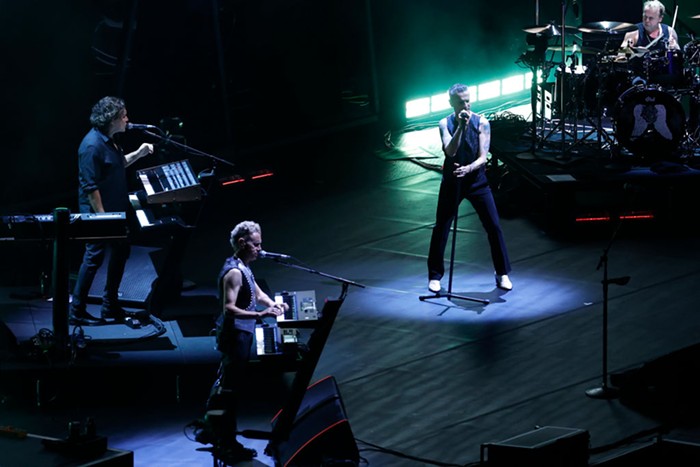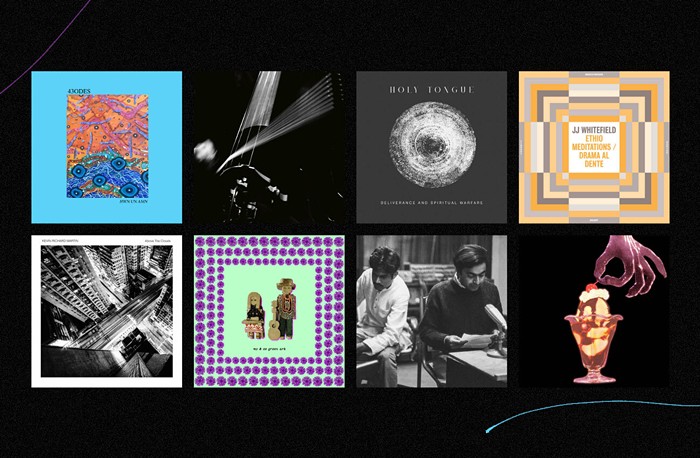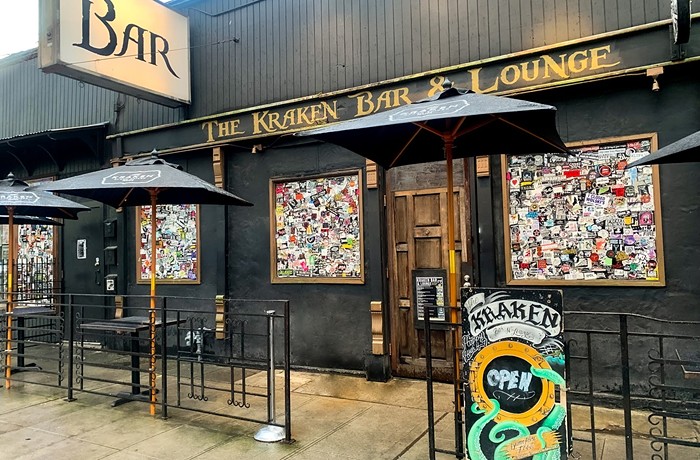Seattle jazz assumes the metaphorical and spiritual shape of the city, the land, and the environment. It affects the way people think, feel, live, work, and believe, cycling into a kind of collective consciousness, which is then expressed through the music. So says Jodee Fenton of Seattle Public Library (which is hosting the expansive Rhythm in Colors exhibition), paraphrasing a concept by Industrial Revelation bassist Evan Flory-Barnes. Fenton cites Stranger Genius Award winner Flory-Barnes as one of many attractions of Rhythm in Colors, a study of Seattle jazz, past and present, with an eye to the future. (It runs through August 13 at the Central Library.)
Rhythm in Colors incorporates the usual Seattle jazz suspects—Ray Charles, who broke out in this town, plus Quincy Jones and Ernestine Anderson, who spent crucial childhoods here—plus a wider cast of older faces, new talent, and a few crucial nonmusical presences. The exhibit gives you photos, but also computer tags to hear live music, plus a telephone number giving access to interview segments from the Seattle Jazz Archive, a work-in-progress collection of in-depth interviews with folks from the Colors exhibit and beyond.
Drummer John Bishop—who was born here in 1959 and returned in the 1980s—recalls his first Seattle concert and how it instilled his faith in the jazz ecosphere: a 1981 gig at Cornish featuring Gary Peacock, Jim Knapp, Dave Peterson, Jerry Granelli, Art Lande, and others. "That's when I knew I was going to hang around. Heavy shit... New relationships usually came about very organically—word of mouth or late-night chance meetings at a club or at Tower Records. It was always a thrill to get accepted into a mentor's world, and each time it would open another door to new musical challenges and an expanding network."
Bassist Jeff Johnson, who settled in Seattle in 1990, revels in meeting people who are just discovering "Seattle has a sort of 'musical mystique' identity that goes beyond just jazz, " he says.
Johnson moved to Seattle on the encouragement of Jim Wilke, who arrived in Seattle back in 1961 and began to promote jazz via radio shows and booking gigs. Most of the well-known jazz greats, Wilke remembers, were still active, including Louis Armstrong, Duke Ellington, Ella Fitzgerald, Dizzy Gillespie, Miles Davis, Dave Brubeck, Bill Evans, Sarah Vaughan, Count Basie, Art Blakey, Ray Charles. "I had the good fortune to do live radio shows with many of them and interviewed many, as well," says Wilke, who produced more than 200 live broadcasts from the Penthouse club in Pioneer Square from 1962 to 1967.
In addition to the Rhythm in Colors exhibit, the library has lined up jazz events throughout the summer, from an Industrial Revelation show and the Lady Be Good: Women Play Jazz film in early July to a "Jazz Talk" featuring legendary trombonist Julian Priester and Industrial Revelation's D'Vonne Lewis (July 19) to a tribute to Ernestine Anderson featuring singer Eugenie Jones (July 28).
Fenton notes that each interview is available and searchable online in both digital video and transcript. "We have also brought together resources in the library's general collection that cover Seattle jazz and added them to the Seattle Collection where they can be used in conjunction with other resources about local music and the arts as well as demographics, social history, and history in general."
Asked about how Seattle's jazz past segues into its future, some showed skepticism. "Culture is under attack everywhere in the US... and even intelligent R&B is no longer viable commercially anywhere in the US," muses Seattle trumpeter Jay Thomas. He's not proposing to turn back the clock. "The Black and Tan, House of Entertainment, and so many black clubs are gone. The black scene is pretty much decimated. The bad old days were actually not so bad when it came to integration in the scene."
Wilke bemoans digital distribution's negative effect on modern jazz musicians' wallets. "I think many listeners are very casual about how they perceive music and think of it in terms of free downloads or streaming, not something they should pay for or someone's livelihood. People don't value music as much as they used to, and as a result are less willing to actually pay for it."
Nevertheless, John Gilbreath, who's promoted jazz events since 1991, including the Earshot Jazz Festival, remains optimistic about this music. "Jazz is defined by both history and innovation, with a high regard for individual expression, hard work, and accomplishment—a lot like Seattle. Jazz won't sit still. Its universe is expanding in all directions at all times—too fast for some and too slowly for others. It is the smaller wheel of revolution inside the bigger wheel of evolution. Seattle and jazz are a lot alike."
"Jazz in its natural state," says Bishop, "doesn't exist without dialogue, collaboration, and mutual respect, so even if there's a perception that it seems to be lacking around here, under the surface, Seattle has always been constantly humming. Without an involved arts reporting environment, though, any artistic activity is going to be overlooked and likely trivialized, so it's not surprising that the massive amount of collaboration around here can be missed."
Pondering the future of Seattle jazz, Flory-Barnes says, "I feel like there is an opportunity to create connections to other communities around the world. I want to build bonds with musicians everywhere: New York City, New Orleans, Denmark, Cuba, wherever. I want them to come to Seattle excited, aware of the goodness here, and feel moved to be a part of it. I want the truth of this city as a cultural place to be undeniable. To folks here and abroad. And through my time inside and outside of town, I want to bring that." ![]()

